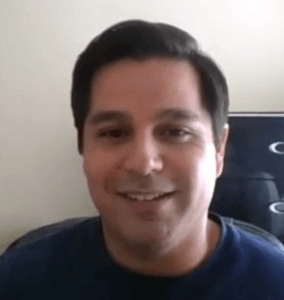As we bid farewell to this year, it’s an opportune moment for small business owners to harness the power of strategic planning. Merging foresight with action, we bring you a comprehensive and inspirational guide to conclude this year with strength and lay a robust foundation for a prosperous 2024. Let’s embark on this journey of growth, efficiency, and sustainability.
Embracing OKRs for Tangible Growth
The first step in this exciting journey is the adoption of Objectives and Key Results (OKRs). This robust framework isn’t just a corporate fad; it’s a beacon guiding you towards measurable success. Imagine running a local bakery with a vision to enhance customer loyalty. By setting an objective like launching a loyalty program and aiming for a 20% increase in repeat visits, you’re not only setting a goal but charting a clear path to achieve it.
Defining OKRs: OKRs (Objectives and Key Results) are a goal-setting framework that helps businesses set clear, measurable objectives. It’s about aligning your business goals with specific, quantifiable outcomes.
Real-World Example: A local bookstore aims to increase its online sales. The objective is clear – boost online revenue. Key results could include increasing website traffic by 30% and growing online inventory by 50%.
Practical Steps:
- Choose one overarching goal.
- Break it down into 2-3 measurable results.
- Set up weekly check-ins to track progress.
Expected Outcome for January: By month’s end, your business should have a clear set of OKRs and a rhythm for monitoring progress, providing focused direction.
Streamlining with Operational Discipline
As we delve deeper, it becomes evident how operational discipline is intertwined with your OKRs. Take the example of a freelance graphic designer optimizing project workflows using management tools like Trello. This aligns with their OKRs of improving client satisfaction and turnaround time and fosters a culture of efficiency.
Understanding Operational Efficiency involves streamlining your business processes to reduce costs, save time, and improve quality. It’s about doing more with less and doing it better.
Real-World Example: Consider a small catering business struggling with order management. Adopting a digital order tracking system allows them to manage orders more efficiently and reduce errors.
Practical Steps:
- Review your current processes.
- Identify one key area for improvement.
- Implement a tool or strategy to enhance efficiency.
Expected Outcome for February: Look for tangible improvements like reduced processing times or enhanced customer satisfaction, indicating a boost in operational efficiency.
Strategic Financial Management as the Growth Enabler
Financial health is not just a pillar of your business; it’s the foundation that sustains and propels it. A meticulous financial review can uncover hidden opportunities for cost savings and efficiency. For instance, a small online retailer re-evaluating shipping methods can significantly cut costs, directly impacting the bottom line and enabling reinvestment in growth areas.
The Essence of Financial Management: It’s about understanding and effectively managing your business’s financial resources. It’s crucial for sustainability and growth.
Real-World Example: A freelance web designer could analyze their expenses and discover they’re overspending on software subscriptions. By switching to cost-effective alternatives, they save money.
Practical Steps:
- Conduct a simple financial review.
- Identify one central area for cost reduction.
- Create and follow a new budget.
Expected Outcome for February: A more streamlined budget, leading to better resource allocation aligned with your business objectives.
The Role of Sustainability in Long-term Success
Our journey is pivotal as we integrate sustainability into the business fabric. Adopting sustainable practices resonates with the growing eco-conscious consumer base and aligns with your long-term growth and brand-building strategies. A local café sourcing from sustainable farms exemplifies this approach, creating a ripple effect of positive brand perception and customer loyalty.
Value of Sustainability and Engagement: These practices support environmental and social responsibility and strengthen customer relations and brand loyalty.
Real-World Example: A coffee shop uses locally sourced coffee and biodegradable cups to attract environmentally conscious customers and enhance community ties.
Practical Steps:
- Pick a relevant sustainability practice to implement.
- Plan a customer engagement activity.
Expected Outcome for March: Increased customer interest and loyalty and a step forward in becoming a more sustainable business.
Overview: Laying the Groundwork for Success with the 90-Day Implementation Plan
The journey towards transforming your small business into a powerhouse of success and sustainability is not just about knowing what to do; it’s about implementing these plans. This is where our 90-day Implementation Plan becomes your roadmap. Designed to translate the insights and strategies we’ve discussed into tangible actions, this Plan is structured to give you clear milestones and measurable outcomes. Each month focuses on specific areas of development, allowing you to progress steadily without feeling overwhelmed. Let’s look at how each phase of this Plan can bring you closer to your goals.
Transitioning into the 90-Day Plan
As we transition into the practical application of our strategies through the 90-day Implementation Plan, we must embrace each step with focus and determination. January is all about setting clear and achievable OKRs and beginning a thorough review of your business operations. In February, the spotlight shifts to implementing operational improvements and refining your financial strategies. By March, you’ll be ready to integrate sustainability into your business ethos and enhance customer engagement. This structured approach is designed to build upon each month’s progress, ensuring that by the end of the first quarter, your business is stronger and more efficient and aligned with long-term growth and sustainability goals. Let’s delve into each month’s specific actions and expected outcomes.
January:
- Set and initiate your OKRs.
- Begin reviewing your business operations.
Expected Outcome: Defined OKRs and identified areas for operational improvement.
February:
- Apply operational improvements.
- Perform a financial review and implement a new budget.
Expected Outcome: Enhanced operational efficiency and a cost-effective budget in place.
March:
- Implement your sustainability initiative.
- Execute your customer engagement plan.
Expected Outcome: Stronger customer engagement and progression towards a sustainable business model.
This structured approach ensures that each strategy stands on its own merit and seamlessly interconnects with others, creating a holistic path to growth and sustainability. As you embark on this journey, remember that the essence of these strategies lies in their integration. Each step, from setting clear OKRs to embracing sustainability, is a piece of a larger puzzle. They form a vibrant strategic plan of growth, efficiency, and long-term success when fitted together. Let this guide be your beacon as you navigate the exciting path ahead, transforming challenges into opportunities and aspirations into realities. Here’s to a strong year-end and a flourishing 2024!




